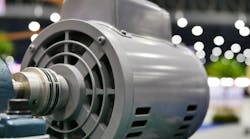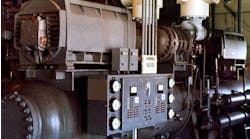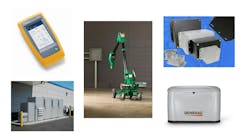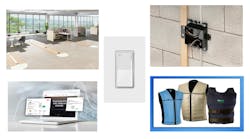Most industrial motors are heavy, and it takes special equipment to safely move them. Installed motors get removed when they need to be replaced. The replacements may be moved multiple times after arriving at the plant.
With time pressure, it might seem tempting to just strap a motor to the forks of a lift truck or stick a hook through its lifting eye and consider that sufficient. What usually happens is the motor position is hard to control, and that's when people get injured.
Carefully plan the lift, carry, horizontal positioning, and lowering of any motor. First, identify the right kind of lifting equipment for each stage. Sometimes, a manual boom or A-frame is best for lowering the motor but a motorized lift truck is best for transporting it to the installation area. Don't use building structural members for any of this.
Next you must identify the correct straps, hooks, and other devices for each stage. You need to ensure the motor is properly secured. For lowering, you need a way to level the motor.




